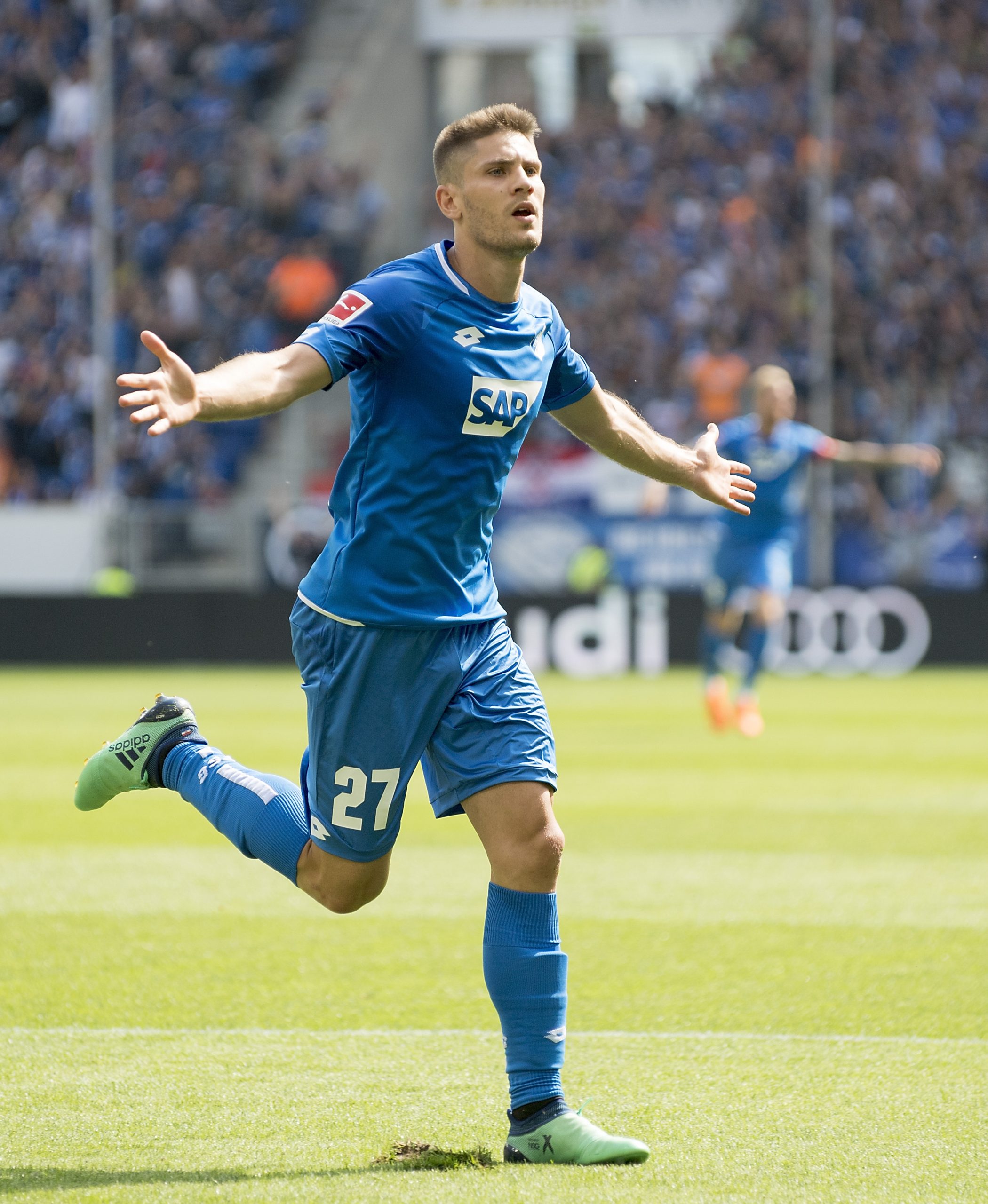Signing for a Premier League team is supposed to be the most important move in a player’s career – it’s the most watched league in the world. Players get that fat pay check and become relevant to a wide audience even if they’re only playing for a mid-to-lower table team. Unfortunately, this also means that if a player’s move to the Premier League fails, he gets written off by those same Premier League-centric fans. That's what happened to Andrej Kramaric. But his story doesn't end there. He bounced back from being a Premier League bust by becoming a regular for a top Bundesliga side, and now he's starting for Croatia at the World Cup.
Kramaric was a consistent scorer during his early career in Croatia, with 15, 18 and 21 goal campaigns between 2012/13 and 2014/15. In that last season, for Rijeka, he scored at the mouth watering rate of roughly once every 74 minutes. Although Kramaric wasn’t particularly young – 23 in that great last campaign for Rijeka –, his scoring record was so consistently great that many were the sides after him. According to StatsBomb's fearless leader, Ted Knutson himself, Brentford looked at the possibility of getting him in the summer before he blew up but couldn’t get the manager to agree to bring him in. By the time they tried again in January, the price tag was heavier and bigger teams were involved.
Leicester City eventually ponied up €10.4 million in January of 2015. That move unfortunately ended with him only playing 587 minutes over the next calendar year, and taking part in only two games during Leicester’s title winning campaign. After Kramaric failed to settle, Hoffenheim showcased their excellent recruitment, snatching him up with a permanent deal after first having him on loan for six months. In his first full season he notched 15 goals and 8 assists from his first full season there and followed it up with 13 goals and 6 assists this campaign, helping Hoffenheim finished in a Champions League spot for the second season in a row.
In the Bundesliga, Kramaric tends to be as one of two strikers in Hoffenheim’s 3-5-2 or as of one two supporting forwards when they chose to play in something closer to a 3-4-3. Regardless, he always has a lot of build-up responsibilities as opposed to acting as a pure number striker. He's a highly technical and mobile number nine, whose value comes not only from scoring goals but also his ability to connect with his teammates.
He can drop deeper, usually from the left half-space, and launch his overlapping wing-back forward into space or switch the side of play:
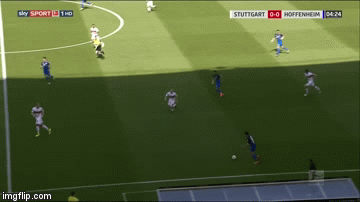
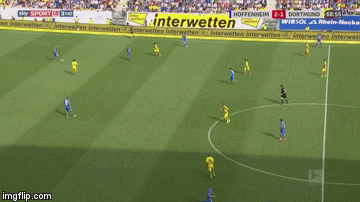
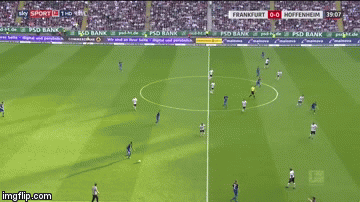
Closer to the box he’s also perfectly capable of putting teammates through on goal and combining with other attackers in reduced amounts of space. He’s good at interpreting space and using his technical ability to take advantage of it.
His 2.1 key passes per 90 minutes are great for a forward and showcase his ability to take set-pieces in addition to all the creative work he does from open play. It’s not common to see a team throw one of their strikers into full-on set-piece duties but his 0.7 key passes per 90 from corners and free-kicks is a very respectable return – with the bonus of him being perfectly capable of threatening the goal directly if the dead-ball is central enough.
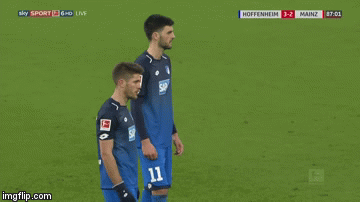
But, don't get lost in his creative work. Kramaric is a striker with 102 goals in about 15,000 league career minutes, he does all sorts of work in front of goal. In his two full campaigns in Germany he’s proven to be a consistent finisher, only slightly overperforming his expected goals and shone as a high-volume shooter – his 3.4 shots per ninety putting him only behind Robert Lewandowski and Pierre-Emerick Aubameyang in the league.
Starting from a deep position means he can get good chances by arriving in the box late, and even when he starts the play further forward he moves well within the box to create space for himself, with an excellent first touch that regularly buys him extra-time to place his finish. Here, Kramaric display all his talents; he drops to the left half-space to help the team circulate possession, before appearing freely in the box where he finishes from a difficult angle.
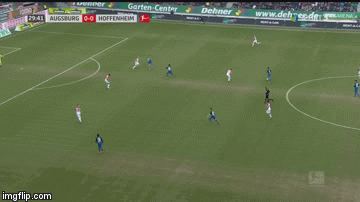
He’s quick and, although not the tallest at 5’ 8’’ (1.77 m), he knows how to use his body well to retain the ball and approach duels. He ends up both fitting into and benefiting from his side’s pressing demands through that physicality couple with his spatial awareness.
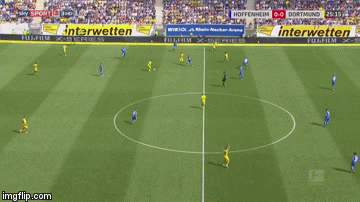
But not all is great: he’s just a bit too trigger happy, with 1.4 shots per 90 from outside the box. There’s always going to be a tendency for this when from a high shooting forward who has such a free role, but a few adjustments here could help make a him a much more effective attacker.
On Croatia, he mostly approaches games from the right side of Croatia’s attack – yet another position to add to his collection. As a right-footed player on the right, he has a lesser tendency to cut inwards to shoot at any given moment as opposed to when he works from the left half-space with his club. On the other hand, Croatia won’t benefit as much from his all-around influence on the ball, but there’s plenty of midfielders in the side with said responsibilities. So, they get a get a good finisher appearing in the box from the right side to support the striker, with the chance to connect with back-post aimed crosses from winger Ivan Perisic.
In this role, Croatia also gets to benefit from Kramaric's own crossing skills. Despite not playing on the wing, his mobility at Hoffenheim ended up leading to him playing a number of crosses. Nobody on the team had more accurate crosses per 90 than Kramaric’s 1.9 – with a very good 33% accuracy rate as well. You can expect him to look for Manduzkic from that right side as well.
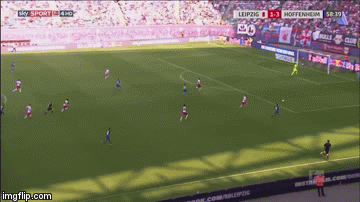
Croatia’s right side is a lot more dynamic, with Atletico’s Sime Vrsaljko offering more offensive support than the opposing full-back. He’s key in support of Kramaric: the forward only completes .8 successful take-ons per 90 and isn’t the most inventive dribbler around, so it’s important that he doesn’t get overly isolated out on the right. Vrsaljko should ensure numerical superiority against the opposition’s full-back or at least numerical equality if the opposite wide midfielder is defending too.
In Croatia’s debut game at the World Cup, manager Zlatko Dalic surprised by playing Kramaric in a second forward role behind Mandzukic. He acted in a free role closer to the one he usually plays in Germany and ended up being credited with his team’s first goal until it was given as an own goal. In this week’s match against Argentina, however, it's likely Croatia will introduce a third midfielder again, leaving the question of where Kramaric will be played to take advantage of Sampaoli’s questionable backline shrouded in mystery.
There’s logic behind Kramaric’s role for the national team. His versatility allows him to play on the right or simulate his Hoffenheim role in a national team context. At 26 he’s at the peak of his powers and, with contract until 2020, he's likely to remain at Hoffenheim – as much as he might be useful for several higher standard sides. But, with a good showing in Russia, we might get this truly underappreciated player to be recognized by most – for his talent and not for his short stint in the East Midlands.
(Header image courtesy of the Press Association)
